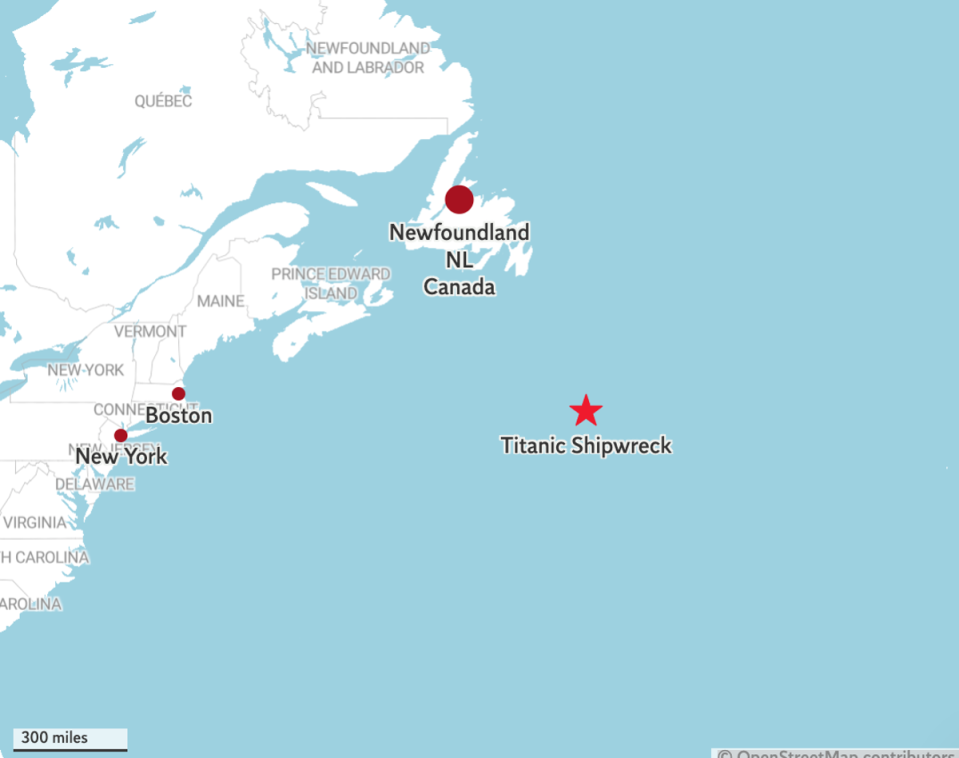Where is the Titanic wreckage?
A tour submersible visiting the site of the Titanic wreck has disappeared, sparking a race against time to find the missing individuals onboard.
The vehicle went missing off the coast of Newfoundland, Canada on Monday, 19 June, according to the US Coast Guard.
The operator of the submersible, OceanGate Expeditions, takes paying tourists to visit the site of the infamous ocean liner.
The RMS Titanic's final resting spot is approximately 370 miles off the coast of Newfoundland, Canada in the North Atlantic Ocean. It sank in 1912, killing approximately 1,500 people on board. Its coordinates are 41º43’32”N, 49º56’49”W.
The wreckage was discovered in 1985 and named a UNESCO World Heritage site in 2012. Since its discovery — and thanks in part to James Cameron's iconic film about the ship's final hours — the ship and its fate have captured the public's imagination.
The company's Titan submersible is capable of extremely deep dive expeditions, and carries enough life support equipment to keep a crew of five alive for up to 96 hours, according to its website.
Despite the offerings of a chance to see the wreckage, very few people have actually taken the journey to the ship's remains. Only 250 people have ever visited — including Mr Cameron — as an eight-day diving tour costs approximately $250,000 per guest, according to the website.
Among those believed on the ship is British explorer Hamish Harding, who joined the crew as a mission specialist, according to a Facebook post he made prior to leaving.

Researchers and tourists may be in a rush to visit the site, as experts believe that the quickly eroding remains may be fully lost by the year 2030. Current research at the site is barred from removing or disturbing the remains at the site.
OceanGate said its focus now is on locating the missing and returning them to their families.
“Our entire focus is on the crewmembers in the submersible and their families,” OceanGate said to CBS News.

 Yahoo Sports
Yahoo Sports 
